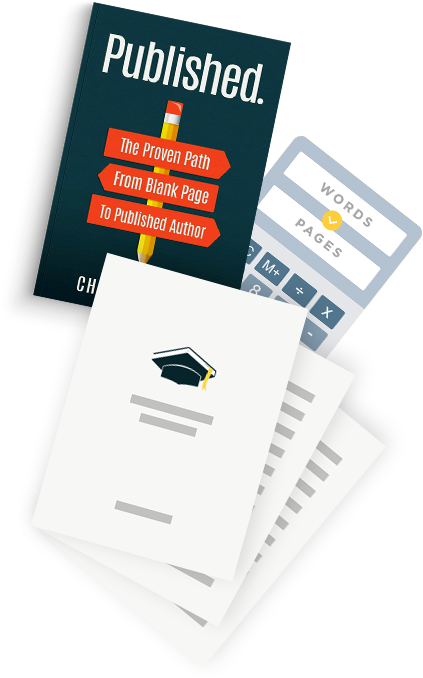Writing is a powerful form of self-expression, capable of capturing the complexities of human emotion, sparking the imagination, and inspiring profound introspection.
From the lyrical prose of poetry to the concise precision of technical writing, the world of literature is full of diverse writing styles.
In this article, we embark on a journey through the world of literary expression, delving into 15 writing styles.
Each writing style possesses its own unique characteristics, structure, and artistic flair. Whether it’s the evocative imagery of descriptive writing, the playful cadence of whimsical writing, or the intellectual depth of philosophical writing, every style holds the power to captivate and transport readers to new levels of understanding and emotion.
Through this exploration of 15 diverse writing styles, we aim to inspire writers, provide a deeper appreciation for the artistry of literary expression, and offer a guide for readers to explore the myriad voices and forms of written communication.
This guide to writing styles covers:
- Technical writing
- Persuasive writing
- Descriptive writing
- Expository writing
- Narrative writing
- Analytical writing
- Creative writing
- Business writing
- Journalistic writing
- Academic writing
- Script writing
- Review writing
- Copywriting
- Personal writing
- Travel writing
Let’s begin by checking out the world of technical writing.
Technical writing
Technical Writing is a specialized form of writing that focuses on conveying complex information in a clear and concise manner.
It is commonly used in technical fields such as engineering, computer science, medicine, and finance, among others. The primary goal of technical writing is to present information, instructions, or explanations in a way that is easily understood by the intended audience.
This style of writing employs a straightforward and logical approach, using precise terminology and avoiding unnecessary jargon or ambiguity. Technical writing often includes visual aids like diagrams, charts, or tables to enhance comprehension. With its emphasis on clarity and accuracy, technical writing plays a crucial role in effectively communicating complex ideas, facilitating knowledge transfer, and enabling readers to navigate complex concepts and procedures.
Technical Writing Examples
– User Manuals
– Scientific Research Papers
– Engineering Reports
Technical Writing Characteristics
– Clarity
– Accuracy
– Purpose Driven
Persuasive writing
Persuasive Writing aims to influence the reader’s thoughts, beliefs, or actions by presenting arguments and supporting evidence in a compelling manner.
Persuasive writing employs rhetorical devices, logical reasoning, and emotional appeal to persuade the audience to adopt a specific viewpoint or take a particular course of action. It often features a clear thesis statement, well-structured arguments, and counterarguments to address potential objections.
Persuasive writing is prevalent in advertising, speeches, opinion pieces, and argumentative essays. By engaging readers’ emotions and intellect, persuasive writing seeks to sway opinions and inspire readers to align with the writer’s perspective or call to action.
Persuasive Writing Examples
– Advertisements
– Opinion Editorials
– Political Speeches
Persuasive Writing Characteristics
– Clear and Convincing Arguments
– Emotional Appeal
– Credibility and Authority
Descriptive writing
Descriptive writing is a vivid and sensory-rich style that aims to paint a detailed picture in the reader’s mind.
It employs a plethora of sensory details, such as sight, sound, touch, taste, and smell, to create a multisensory experience. Descriptive writing goes beyond mere observation, delving into the realm of emotions and impressions.
It uses figurative language, similes, and metaphors to evoke specific images and moods. By employing a rich vocabulary and careful selection of words, descriptive writing brings scenes and characters to life, immersing readers in a captivating and tangible world. It captures the essence of a moment, allowing readers to experience it vicariously through the power of words.
Descriptive Writing Examples
– Travel Writing
– Restaurant Reviews
– Product Descriptions
Descriptive Writing Characteristics
– Vivid Sensory Detail
– Emotional Impact
Expository writing
Expository writing is an informative and fact-based style that seeks to educate and clarify complex subjects.
It presents objective information, explanations, and analyses in a clear and concise manner. Expository writing focuses on providing a deeper understanding of a topic, utilizing evidence, examples, and logical reasoning to support its claims.
This style employs a straightforward and organized approach, often using headings, bullet points, and transitional phrases to enhance readability. Whether found in textbooks, scientific articles, or news reports, expository writing serves to impart knowledge, explore ideas, and promote understanding, making it a valuable tool for disseminating information across various domains.
Expository Writing Examples
– Textbooks
– Scientific Writing
– News Reporting
Expository Writing Characteristics
– Objectivity
– Organized Structure
– Evidence and Examples
Narrative writing
Narrative writing brings stories to life through the artful crafting of characters, plot, and setting.
It employs vivid descriptions, engaging dialogue, and a sense of progression to immerse readers in a fictional world or recount real-life events. Narrative writing often follows a chronological structure, guiding readers through a beginning, middle, and end. It focuses on developing relatable characters, building suspense, and resolving conflicts.
This writing style evokes emotions, transports readers to different time periods or places, and sparks imagination.
Whether in novels, short stories, or personal narratives, narrative writing enchants and captivates, weaving tales that entertain, inspire, and resonate with audiences.
Narrative Writing Examples
– Novels
– Short Stories
– Memoirs
Narrative Writing Characteristics
– Storytelling
– Character Development
– Descriptive Language
Analytical writing
Analytical writing is a systematic and critical style that examines and interprets complex information or ideas.
It involves breaking down a topic or concept into its constituent parts and evaluating their relationships, significance, and implications.
Analytical writing utilizes logical reasoning, evidence, and thoughtful analysis to support its claims and draw well-founded conclusions. It often involves comparing and contrasting different perspectives, theories, or data to provide a comprehensive understanding of the subject.
This style values precision, clarity, and objectivity, aiming to deepen the reader’s knowledge and foster critical thinking. Whether in academic essays, research papers, or analytical reports, analytical writing helps unravel complexities and uncover deeper insights.
Analytical Writing Examples
– Academic Essays
– Research Papers
– Business or Policy Analysis Reports
Analytical Writing Characteristics
– Critical Thinking
– Evidence Based
– Structured and Organized
Creative writing
Creative writing is an imaginative and expressive style that explores the realms of fiction, poetry, and personal expression.
It encourages writers to unleash their creativity, crafting unique narratives, vivid descriptions, and evocative language. Creative writing embraces literary devices, such as metaphors, similes, and symbolism, to create depth and resonance. It prioritizes storytelling, character development, and emotional impact, transporting readers to new worlds, evoking emotions, and prompting introspection.
This versatile style allows writers to experiment with different genres, voices, and perspectives, making it a powerful tool for self-expression, entertainment, and artistic exploration. From short stories to epic novels, creative writing celebrates the boundless possibilities of the written word.
Creative Writing Examples
– Short Stories
– Poetry
– Novels
Creative Writing Characteristics
– Imagination and Creativity
– Emotional Impact
– Artistic Language and Stylistic Choices
Business writing
Business writing is a practical and professional style that is utilized in various corporate and organizational contexts. It encompasses a wide range of written communications, including emails, memos, reports, proposals, and presentations.
Business writing aims to convey information, instructions, or ideas in a clear, concise, and professional manner. It focuses on achieving specific business objectives, such as persuading clients, informing employees, or presenting data to stakeholders. Some may choose to write a book about their business, to get leads and grow your business.
Business writing often prioritizes brevity, using straightforward language and structure to ensure efficiency and comprehension. Effective business writing enhances communication within an organization, facilitates decision-making processes, and strengthens professional relationships.
Business Writing Examples
– Emails
– Reports
– Proposals
Business Writing Characteristics
– Clarity and Conciseness
– Professional Tone and Style
– Purpose Driven and Action Oriented
Journalistic writing
Journalistic writing is an informative and objective style that seeks to report news, events, or provide analysis in a concise and engaging manner.
It prioritizes accuracy, fairness, and the timely dissemination of information. Journalistic writing employs a straightforward and clear language, delivering facts, quotes, and contextual details to inform readers. It adheres to the principles of journalistic ethics, including verification of sources and presenting diverse perspectives.
Journalistic writing encompasses various formats, including news articles, feature stories, interviews, and opinion pieces. It serves to inform, engage, and hold power accountable, playing a crucial role in shaping public discourse and keeping society well-informed.
Journalistic Writing Examples
– News Articles
– Feature Stories
– Editorial Columns
Journalistic Writing Characteristics
– Objectivity
– Accuracy and Credibility
– Clarity and Conciseness
Academic writing
Academic writing is a formal and scholarly style that is prevalent in educational and research contexts.
It is characterized by its emphasis on critical thinking, analysis, and the exploration of complex ideas. Academic writing follows a specific set of conventions, including the use of clear and precise language, adherence to citation and referencing styles, and the presentation of well-supported arguments.
It aims to contribute to existing knowledge, engage in scholarly debates, and communicate research findings. Academic writing is found in research papers, essays, theses, and scholarly articles, playing a fundamental role in the dissemination of knowledge and intellectual discourse.
Academic Writing Examples
– Research Papers
– Essays
– Dissertations or Theses
Academic Writing Characteristics
– Formality and Objectivity
– Scholarly Sources
– Rigor and Critical Thinking
Scriptwriting
Scriptwriting is a specialized writing style that is dedicated to creating scripts for various forms of media, such as film, television, theater, and radio.
It involves crafting dialogue, actions, and stage directions to guide actors, directors, and production teams in bringing stories to life. Scriptwriting demands brevity, as writers must convey character motivations, plot developments, and visual details within specific page limitations.
It employs formatting conventions, such as dialogue indentation and scene headings, to ensure clarity and ease of production. Scriptwriting requires a keen understanding of dramatic structure, character development, and pacing to create engaging narratives suited for performance or screen adaptation.
Scriptwriting Examples
– Film Scripts
– Television Scripts
– Theater Scripts
Scriptwriting Characteristics
– Dialogue Driven
– Visual and Action Descriptions
– Structure and Formatting
Review writing
Review writing is a form of critical analysis that aims to evaluate and provide an assessment of a particular product, service, or creative work.
It involves offering an informed opinion based on personal experiences, observations, and analysis. Review writing requires the reviewer to consider various aspects, such as quality, performance, usability, and value for money. It often incorporates descriptions, examples, and comparisons to support the evaluation.
Review writing can be found in various domains, including literature, film, restaurants, technology, and more. By providing insights and recommendations, review writing helps consumers make informed decisions and promotes dialogue within communities of enthusiasts and consumers.
Review Writing Examples
– Book Reviews
– Film Reviews
– Product Reviews
Review Writing Characteristics
– Evaluation and Critique
– Subjectivity and Personal Opinion
– Supporting Evidence and Examples
Copywriting
Copywriting is a specialized form of writing that focuses on creating persuasive and engaging content for marketing and advertising purposes. It involves crafting compelling headlines, taglines, and promotional texts that captivate the target audience and
motivate them to take a desired action. Copywriting requires a deep understanding of the target market, their needs, and desires, enabling the writer to deliver messages that resonate with potential customers. It employs persuasive techniques, such as storytelling, emotional appeals, and calls to action, to grab attention, build brand awareness, and drive conversions.
Copywriting is found in various mediums, including print ads, websites, social media campaigns, and product descriptions, playing a crucial role in influencing consumer behavior and promoting brands.
Copywriting Examples
– Advertising Slogans
– Website Copy
– Social Media Advertisements
Copywriting Characteristics
– Persuasive Language
– Conciseness and Clarity
– Call to Action
Personal writing
Personal Writing is an introspective form of writing that provides an outlet for self-expression and reflection.
It involves recording daily experiences, thoughts, emotions, and observations in a private diary or journal. Personal writing allows individuals to explore their inner world, document significant events, and capture fleeting moments. It serves as a therapeutic tool, promoting self-awareness, stress relief, and emotional processing.
Personal writing and particularly, stream of consciousness writing, encourages honest and uninhibited expression, without the need for external validation or judgment. It is a means of preserving memories, tracking personal growth, and fostering a deeper understanding of oneself.
Writing personal essays is another form this type of writing can take.
Personal Writing Examples
– Diaries
– Journals
– Mantras and Affirmations
Personal Writing Characteristics
– Personal Reflection
– Informal and Unfiltered
– Documenting Daily Life
Travel writing
Travel writing is a captivating genre that transports readers to distant lands, cultures, and experiences.
It combines the art of storytelling with a deep appreciation for exploration and adventure. Travel writing vividly captures the essence of a place, describing its landscapes, people, traditions, and attractions. It engages the senses, painting a colorful and immersive picture of the destination.
Travel writers share personal anecdotes, insights, and recommendations, providing a window into different cultures and inspiring readers to embark on their own journeys. Whether it’s a travelog, destination guide, or memoir, travel writing sparks wanderlust, fosters cultural understanding, and celebrates the transformative power of travel.
Which style of writing will you try next?
So – we have finished diving into various styles, ranging from descriptive and narrative writing to analytical and academic writing, each with its distinct purpose, examples, and characteristics.
Beyond the surface-level exploration, this article serves as a reminder that writing is a powerful tool for communication, expression, and connection.
Whether it’s captivating readers with vivid descriptions, persuading them through persuasive language, or enlightening them with scholarly insights, writing can impact and inspire.
As readers, we also gain a newfound appreciation for the art of writing.
Ultimately, this exploration of writing styles encourages us to be more mindful and intentional in our own writing endeavors.
It encourages us to experiment with different styles, to hone our skills, and to continue evolving as writers.
Whether we aim to entertain, inform, persuade, or reflect, we can draw inspiration from the plethora of writing styles out there to craft meaningful and impactful books.
Here are some prompts to get you started:



